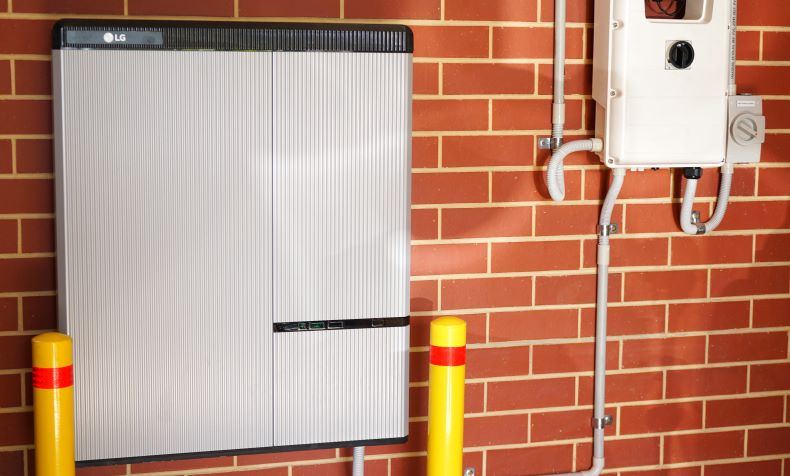Summary:
Hanwha Q Cells is entering a new marking in the solar power industry. The solar company is buying the storage software startup Geli.
Main Article:

Over the past decade, Geli has seen its software put to use to design, install, and operate megawatts of grid-connected and behind-the-meter battery and microgrid projects. On Thursday, the San Francisco-based startup agreed to be acquired by Hanwha Q Cells, to serve as the solar module giant’s entrée into North American commercial and industrial solar-plus-storage markets.
Solar batteries are becoming an increasingly valuable addition to distributed solar power projects, and that's true both for homeowners and some commercial customers. Hanwha Q Cells, which has already launched its own residential storage system in European and Australian markets, bought Geli to help manage the more complex and cost-sensitive C&I storage market, Mina Park, Hanwha Q Cells' vice president of business development, said in an interview this week.
“Our customers are starting to look for an integrated solution — hardware plus software — that has wraparound services, warranties, and much more integrated customer experiences,” Park said. “It’s all about bringing the cost down.”
The South Korean company is already a major supplier of solar modules to U.S. commercial and industrial customers, with a 26 percent share of the market in the second quarter, according to Wood Mackenzie. But the company wants to play a bigger role in supplying batteries to those same customers.
Geli was one of the last pure-play storage software vendors standing. In 2016, Seattle-based startup 1Energy was acquired by Doosan. In 2017, battery software startup Greensmith was bought by Wartsila and German energy storage software and project owner Younicos was bought by Aggreko.
Hanwha Q Cells’ purchase price was not disclosed. Geli has raised about $24 million since its 2010 founding.
Geli, which stands for Growing Energy Labs Inc., got its start providing software for microgrid and electric vehicle-solar-battery integration projects in California and New York. It’s since expanded to work with partners such as Flex’s NEXTracker and Australian solar provider Energy Matters, at scales ranging from multi-megawatt grid batteries and virtual power plant aggregations to behind-the-meter residential solar power systems.
In North America's C&I market for solar energy storage systems, Hanwha Q Cells will compete with vendors such as Stem and Engie Storage, formerly Green Charge Networks, which design their own software. Ensuring that solar batteries earn their keep requires careful management to reduce peak demand charges, balance shifting load patterns against complex commercial energy rates and tariffs, and operating the solar batteries within limits to optimize their effective lifespan.
Bringing solar energy to the mix adds the complexities of arbitraging the value of self-generated and stored power against all those factors. Sizing the battery to optimize these values is a bit of a balancing act, CEO Dan Loflin told Greentech Media. Too much battery adds unnecessary costs, while too little battery may prevent the overall solar power system from meeting its targets.
What’s more, “that cocktail of factors is evolving, almost immediately,” he said. Energy usage patterns change as businesses expand or invest in new equipment, while utilities and regulators can introduce new demand charge regimes, energy tariffs and time-of-use rates. “While it’s hard to quantify that, I think that if you have a simplistic or dumb EMS [energy management system], you’re basically flatfooted.”
Unlike most energy storage vendors offering combined software-hardware packages, Geli took a standalone software-as-a-service approach, integrating with a variety of battery and inverter systems and project developers. It also took a holistic view of its role to include system planning and design as well as ongoing operations and optimization, Loflin said.
“I wouldn’t say we’re the only ones doing it now,” but in its early days Geli was one of the few battery management software (BMS) vendors “offering what we call design-time software,” or its ESyst platform to calculate the optimal mix of batteries for individual customer sites.
Likewise, Geli’s Energy Operating System was designed not only to “operate the battery in the most effective manner, but also to manage the asset operations and warranty tasks,” Loflin said. “It’s about managing the lifecycle of the system.”
This start-to-finish approach lends itself well to Hanwha Q Cells’ goals, said Hanwha Q Cells' Park. Given the increasingly competitive landscape for solar-plus-storage developers, “I think it is a must to have these capabilities to enter the market,” Park said. Geli’s existing customer base of solar energy developers, energy services companies and energy retailers fits in well with Hanwha Q Cells strategic interest in its target markets, and the startup’s extensive store of data to inform its machine learning analytics is an important addition, Park said.
Get creative and design your own rooftop solar system by going to HahaSmart and using the design DIY tool and see how much the system will cost using the price checker tool.


Input your address to see if it is solar friendly and how much you can save with solar.
Great. Your address is perfect for solar. Solar incentive is still available. Select monthly utility cost and calculate the size of solar system you will need now.
| kw System size | years Payback period | Lifetime savings |
No money down, 100% finance is available.

|
|
Interested in Getting a Solar Panel Installation? Sign Up Here! |
Comments